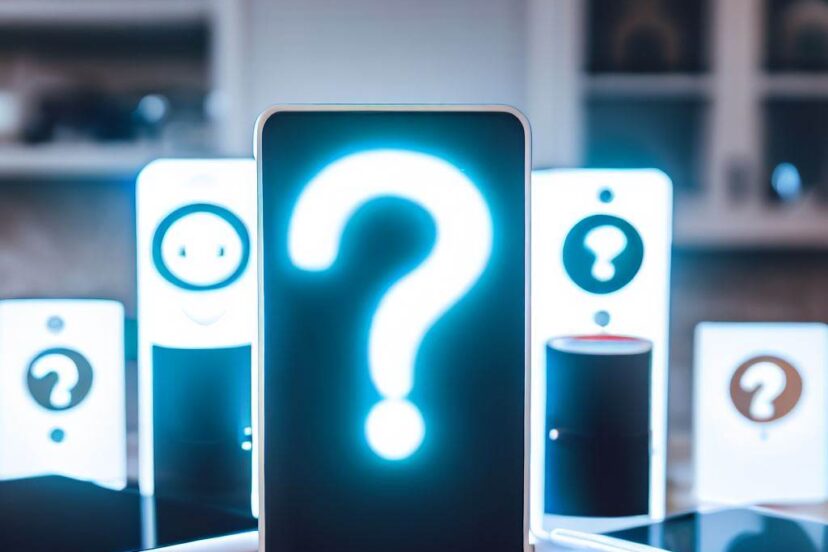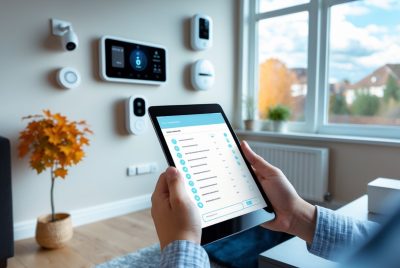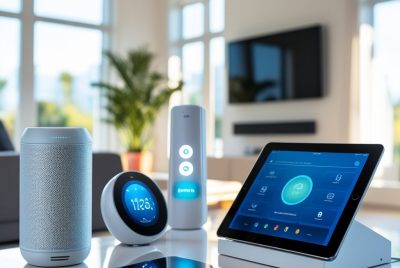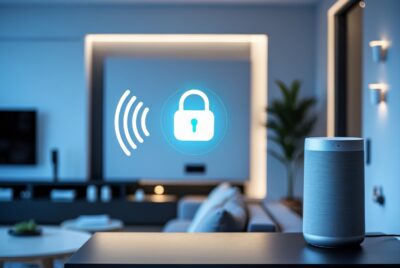Google Assistant Not Working: Troubleshooting Tips
*We may earn a commission for purchases made using our links. Please see our disclosure to learn more.
Google Assistant Not Working: Troubleshooting Common Issues
Google Assistant is a handy tool that can make everyday tasks easier, but there are times when it doesn’t respond as expected. If your Google Assistant isn’t working, the first step is to ensure that both ‘Hey Google’ and ‘Voice Match’ are turned on. This can often resolve the issue right away.

To check this, just say, “Hey Google, open Assistant settings,” and navigate to the “Voice Match” settings. If the problem persists, it might be necessary to update the relevant apps or restart your device. Sometimes, simple actions like these can solve the problem and get your Assistant back on track.
Unfortunately, there are instances when additional troubleshooting is required. This can involve checking your device’s connection to Wi-Fi, ensuring it’s powered on, or even retraining your voice model. Each of these steps targets common issues that might be causing your Google Assistant to be unresponsive.
Troubleshooting Steps for Google Assistant Issues

When Google Assistant is not working, there are several steps I can take to get it running again. These steps include checking the internet connection, updating the app, ensuring the Assistant is enabled in settings, and restarting the device.
Check Internet Connection
An internet connection is essential for Google Assistant to function. I first make sure that my device isconnected to a stable Wi-Fi network or has a good mobile data signal. Weak or intermittent connections can cause issues.
A quick way to check is by opening a web browser or another app that requires internet. If those apps struggle to load, I know the connection might be the problem. I can try moving closer to the router or resetting my network settings.
Update Google Assistant App
Running an outdated version of the Google Assistant app can lead to problems. To fix this, I open the Google Play Store and check for updates. Keeping apps up-to-date ensures they have the latest features and bug fixes.
If I see an available update for Google Assistant, I tap the “Update” button. This usually resolves many issues caused by bugs in previous versions.
Enable Google Assistant in Settings
Sometimes, the Assistant is disabled in the device settings. To check this, I open the Google Assistant app and navigate to the Assistant settings.
Under the “Popular settings” section, I tap “Voice Match” to ensure the “Hey Google” feature is turned on. If it is off, I enable it and set up Voice Match, which allows the Assistant to recognize my voice.
Restart Your Device
A simple yet effective troubleshooting step is to restart the device. This action can clear out temporary glitches and refresh the operating system.
To restart, I hold down the power button for about 10 seconds, then select “Restart” from the options that appear. Once the device has rebooted, I test Google Assistant again to see if the problem is resolved.
Restarting often helps in resolving various issues and is a quick first step to try.
Voice Recognition Errors

Voice recognition errors can disrupt your experience with Google Assistant by failing to recognize your voice commands accurately. Below are solutions to fix these errors, including retraining your voice model and improving microphone sensitivity.
Retrain Voice Model
Sometimes, Google Assistant may not recognize your voice accurately. This often happens if your voice model is not set up properly. To fix this, I recommend retraining the voice model:
- Open the Google Assistant app on your device.
- Say “Assistant settings” or navigate to the settings manually.
- Go to Voice Match and select Retrain Voice Model.
- Follow the on-screen prompts to re-record your voice commands.
By retraining your voice model, you help the Assistant better recognize your voice, even in noisy environments.
Improve Microphone Sensitivity
Microphone issues can also lead to voice recognition errors. Ensure your microphone is working at its best:
- Keep your device clean. Dust can block the microphone and reduce its sensitivity.
- Check app permissions. Make sure that the Google Assistant has access to your microphone.
- Update your apps to ensure you have the latest fixes and improvements.
If you continue to experience issues, consider using an external microphone to improve voice capture quality. By following these steps, you can enhance the performance of Google Assistant in understanding your commands.
Device Compatibility and Settings

To ensure Google Assistant works smoothly, it is important to confirm your device is supported and that your language and region settings are correctly configured. The details below provide specific guidance on both aspects.
Supported Devices
Not all devices support Google Assistant. Most Android phones and tablets from recent years do, but some older models may not.
Google Assistant is primarily available on:
- Android phones and tablets running Android 5.0 or later.
- iPhones and iPads running iOS 10.0 or later.
Smart speakers, smart TVs, and wearables also often come with Google Assistant. If your device isn’t listed, check Google’s official website for compatibility.
Language and Region Settings
Google Assistant must be set to a language and region it supports. Not all features are available in every language or region, so it’s crucial to choose the right options.
To check your settings:
- Open the Google Assistant app.
- Go to Assistant settings.
- Select Languages.
- Choose a supported language.
For region settings:
- Go to Device Settings.
- Tap System.
- Select Regional Settings.
- Verify your region matches your language.
Tip: Some features might not work if your language and region don’t match.
Account and Privacy Concerns

When using Google Assistant, managing your account permissions and privacy settings is very important. Here are some steps to ensure your information stays safe and your privacy is protected.
Review Google Account Permissions
First, it’s crucial to review the permissions linked to your Google account. Open your Google account settings and navigate to the Security section. Here, you’ll find a list of devices and apps that have access to your account.
Make sure to regularly check and revoke access to any unfamiliar or unused devices. This will help to keep your information secure. Additionally, usage history from Google Assistant can be reviewed and managed under the Data & Personalization tab.
Ensuring only necessary apps and devices have permission reduces the risk of unauthorized access. It’s a good habit to periodically audit these settings.
Manage Privacy Settings
Next, managing your privacy settings can help control what information Google Assistant collects and how it’s used. In the Google Assistant settings, you can find options to manage data, such as voice recordings and activity history.
You can choose to delete voice recordings and other saved data to maintain privacy. There’s also an option to pause the collection of certain data points. Ensuring these settings align with your privacy preferences helps maintain control over your personal information.
Moreover, enable features like two-factor authentication for an added layer of security. Regularly updating your password also adds an extra barrier against potential breaches. Managing these settings ensures your data remains private and secure while using Google Assistant.
Advanced Troubleshooting Techniques

I focus on more complex solutions to fix Google Assistant issues. Knowing how to reset app preferences and contact support can help solve persistent problems.
Reset App Preferences
Resetting app preferences can often clear up any hidden settings issues that might be troubling your Google Assistant. To reset:
- Open Settings on your device.
- Find and tap Apps & notifications.
- Tap on See all apps.
- Tap the three dots at the top-right corner.
- Select Reset app preferences.
This action will reset all preferences for disabled apps, notification restrictions, and background data restrictions. Keep in mind that it doesn’t erase any app data, so your essential information remains safe.
Contact Support
If resetting preferences doesn’t help, contacting Google support might be necessary. Here’s how to go about it:
- Open the Google Assistant app.
- Tap on your profile picture or initial.
- Go to Assistant settings.
- Scroll down and tap Support.
- Explain your issue clearly and provide any error messages you’ve encountered.
Google’s support team is equipped to handle advanced troubleshooting and can escalate your issue if necessary.
Frequently Asked Questions for Google Assistant Not Working
This section addresses common issues people face with Google Assistant. I’ll provide specific steps to help you solve these problems on various devices.
1. How can I reset Google Assistant on my phone?
To reset Google Assistant, open the Google Assistant app on your Android phone. Go to Assistant settings by saying, “Assistant settings.” Tap on Voice Match and turn it off. After that, turn it back on and follow the setup instructions.
2. What steps are needed to fix a Google Assistant glitch?
First, make sure your app is up-to-date. Go to the Google Play Store, find Google Assistant, and tap Update if available. Restart your phone. If the problem persists, try clearing the app cache by going to Settings > Apps > Google Assistant > Storage > Clear Cache.
3. Why is Google Assistant not responding on my Samsung device?
Check if Hey Google is turned on by opening Google Assistant settings and tapping on Voice Match. Make sure Hey Google and Voice Match are enabled. Restart your device and update the Google app from the Play Store.
4. How do I troubleshoot Google Assistant connectivity issues in my car?
Ensure your phone is connected to your car’s system via Bluetooth or USB. Open the Google Assistant settings and check if Google Assistant is enabled. If needed, update your car’s infotainment system software, and make sure your phone’s mobile data or Wi-Fi is working.
5. What should I do if Google Assistant is not working on my iPhone?
Open the Google Assistant app on your iPhone. Sign in with your Google account, go to Settings, and tap Assistant settings under your profile. Make sure Hey Google is turned on. If issues persist, try reinstalling the app from the Apple App Store.




